Art World
Laure Prouvost Is Digging a Tunnel Between the French and British Pavilions at the Venice Biennale
Everyone is talking about the French artist who blurs fact and fiction in a standout exhibition that invites you to dig below the surface.
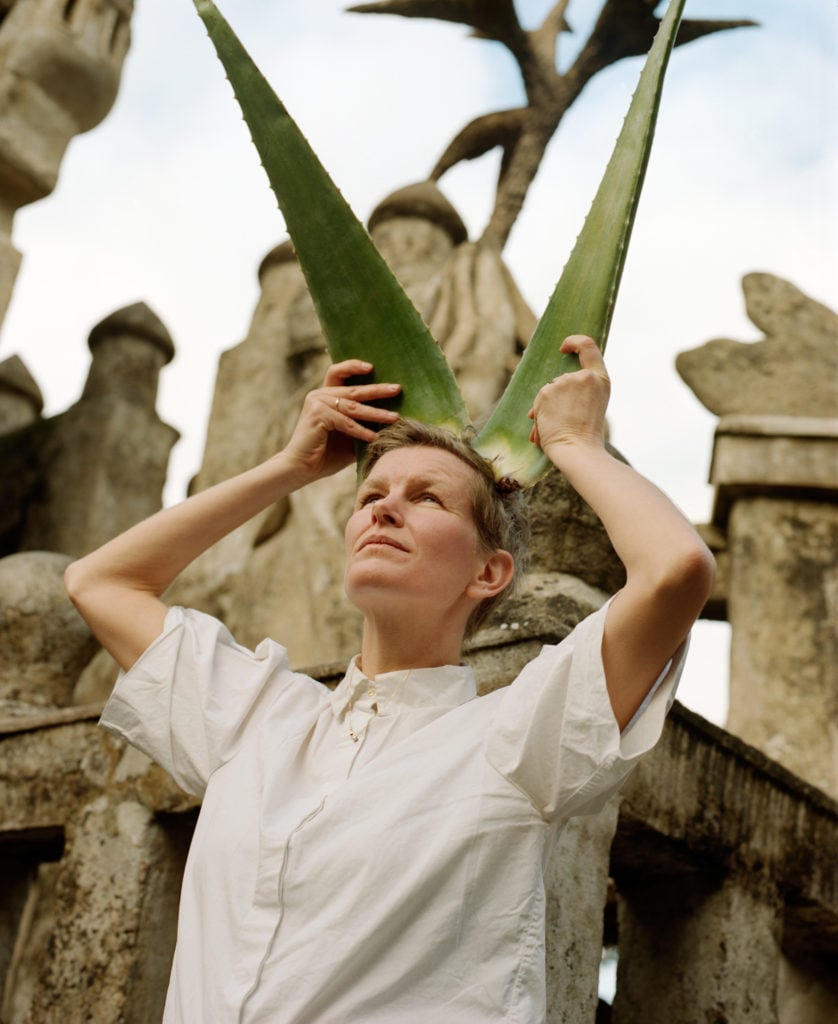
Everyone is talking about the French artist who blurs fact and fiction in a standout exhibition that invites you to dig below the surface.

Naomi Rea

The week before the Venice Biennale opened, there was a rumor circulating that Laure Prouvost was digging a tunnel between the French and British pavilions. I was intrigued, but skeptical, as it sounds like a joke about strengthening the faltering links across the Channel in the wake of Brexit. Also, the artist who is representing France at the Biennale is an exceptional tease. So, all rumors need to be taken with a pinch of salt.
Prouvost isn’t shy about her habit of telling fibs, or “salads” as she calls them. (In French, the expression “raconter des salades” means to tell tales, and she has promised to tell us lots of salads on the way to Venice). Nevertheless, I did a little digging myself, but inquiries to her studio yielded only cryptic responses from the artist’s octopus alter-ego, fueling my theory that the tunnel idea might just be a red herring.
Prouvost has dug holes before—in 2013, the London- and Antwerp-based artist won the Turner Prize for a work following her fictional grandfather who got lost digging a hole to Africa, and in 2015 she burrowed into the earth to build a video installation in Vilnius. But when I arrived at the French Pavilion in Venice’s historic Giardini, I wasn’t expecting to find a literal hole. But a hole there is. if you enter the pavilion—not through the grand entrance but around the graffiti-laden back door—you find an earth-filled basement, where there is, indeed, what looks like the start of a tunnel.
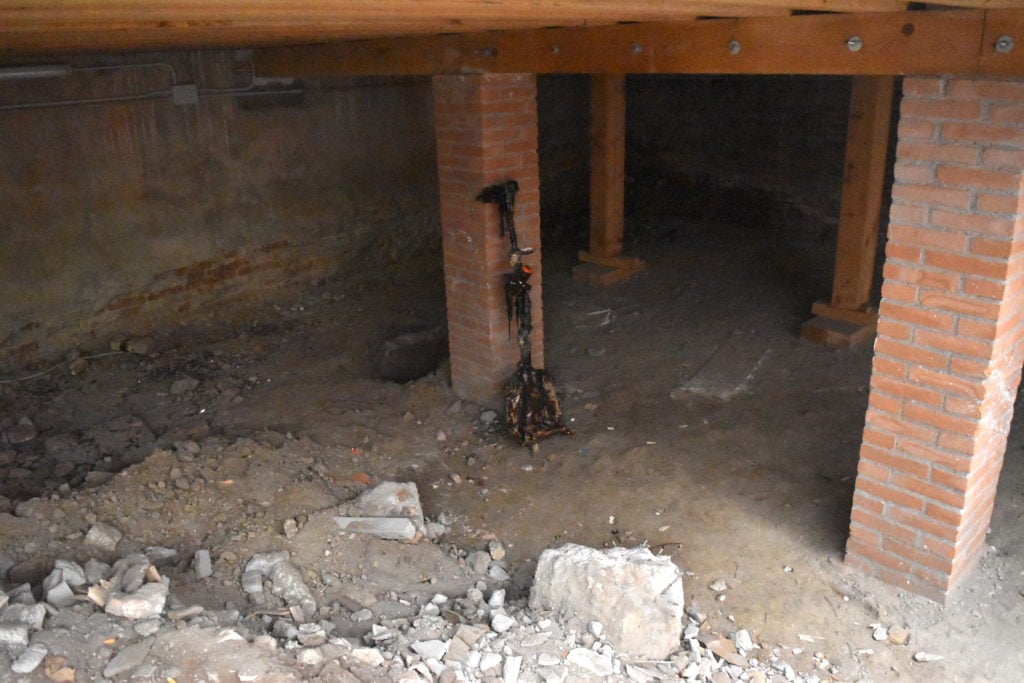
Laure Prouvost installation at the French Pavilion. Image courtesy Ben Davis.
Of course, it’s not just a hole. Digging is a recurring theme in Prouvost’s work. It’s one of the words included in the artist’s “Legsicon,” published in conjunction with her ongoing solo show at the M HKA in Antwerp (through May 19) “AM-BIG-YOU-US LEGSICON.” She describes a process of stripping back layers to gain access to ambiguous truths about who we are. Indeed, the pavilion is anchored by a new film work, which Prouvost describes in an interview with the curator Martha Kirszenbaum as “a journey towards an ideal elsewhere enabling us to learn how to understand ourselves better.”
Prouvost’s pavilion is titled “Deep See Blue Surrounding You/Vois Ce Bleu Profond Te Fondre.” The Antwerp-based artist is the third woman to represent France at the Biennale, after Annette Messager in 2005 and Sophie Calle in 2007.
Climbing the stairs you emerge into a glassy sculptural installation, featuring objects made with glassblowers in the Venetian island of Murano. Here, sea creatures cohabit with some of the trash that fills our oceans, from cigarette butts to discarded plastics to outmoded technologies such as old cell phones and iPods, which speaks to our rapidly changing society, and its impact on the natural world.
This leads into the screening room, where the artist’s new film follows a group of around a dozen characters on a contemporary Odyssey beginning in Paris and ending in Venice, but wandering through various adventures en route.
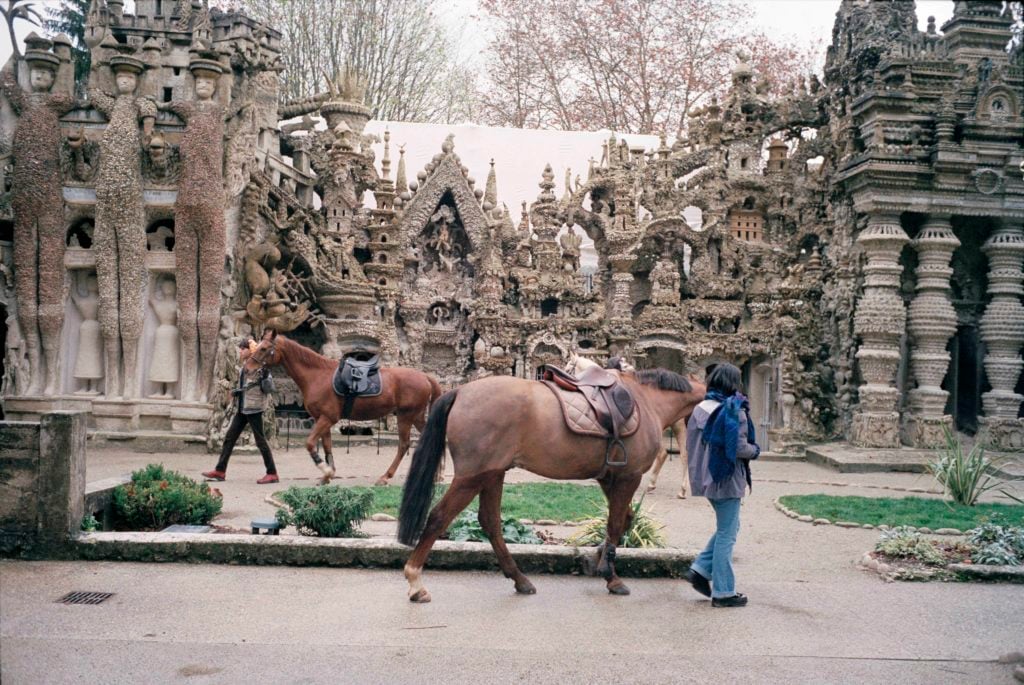
Laure Prouvost, film stills (2019). Courtesy of the artist, Galerie Nathalie Obadia (Paris – Brussels), carlier | gebauer (Berlin) & Lisson Gallery (London – New York).
Stops along the way include the picturesque Palais Idéal du Facteur Cheval in Hauterives, a late 19th-century monument of naive architecture built over three decades by a postman, the titular Cheval, using stones he found interesting along his postal route. Prouvost is drawing on a lineage of artists and thinkers inspired by the idiosyncratic location; the palais was a particular fascination of surrealists Max Ernst and André Breton, and Picasso also drew inspiration from it.
The film’s characters cross generations and include a rapper, a magician, and a flautist. Throughout the work Prouvost and her motley crew intone, with the ethereal cadence of spoken word, various mistranslations and confusing transliterations of phrases in French and English, peeling back the prescriptive nature of words and language and tapping into a kind of primordial pre-verbal energy.
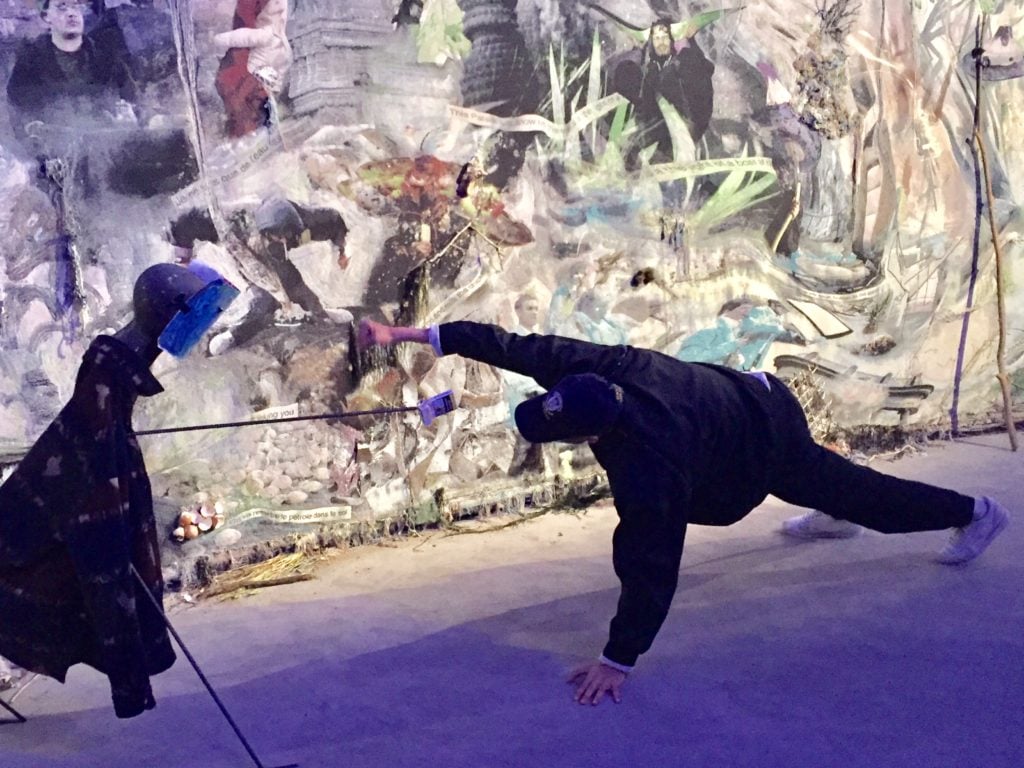
A performer interacts with Laure Prouvost’s French pavilion installation. Photo by Naomi Rea.
This energy appears to be contagious, as Prouvost’s characters spill out of the screen and hide among the audience, periodically breaking out into performance—when I was there I spotted a dancer, and one of the magician’s doves. Prouvost explains the performative interventions as the film “coming out of itself.”
As is characteristic of the artist’s blurring of fact and fiction, the dream-like film is punctuated with some documentary footage. It is a shock to the system when a fiery and present reality, footage of the recent blaze that destroyed roof of Notre-Dame Cathedral, punctuates the ostensibly fictional journey. Asked how she incorporated the footage of the inferno into her film on the eve of the Biennale preview week, Prouvost said it was “easy,” as the footage was everywhere. She describes the intrusion of the dramatic footage as “a little wink” to our immediate reality.
Although a French native, Prouvost has spent much of her career working outside of France, making her an odd choice to represent the country in the national pavilion. As well as being based in London and Antwerp, she claims to also have a caravan home in the Croatian desert.
French culture minister Franck Riester notes in the press text for the pavilion that Prouvost’s international experience has led her “to question the concept of ‘national representation,’ and more broadly, the question of identity, which is so important and sensitive in our societies today.”
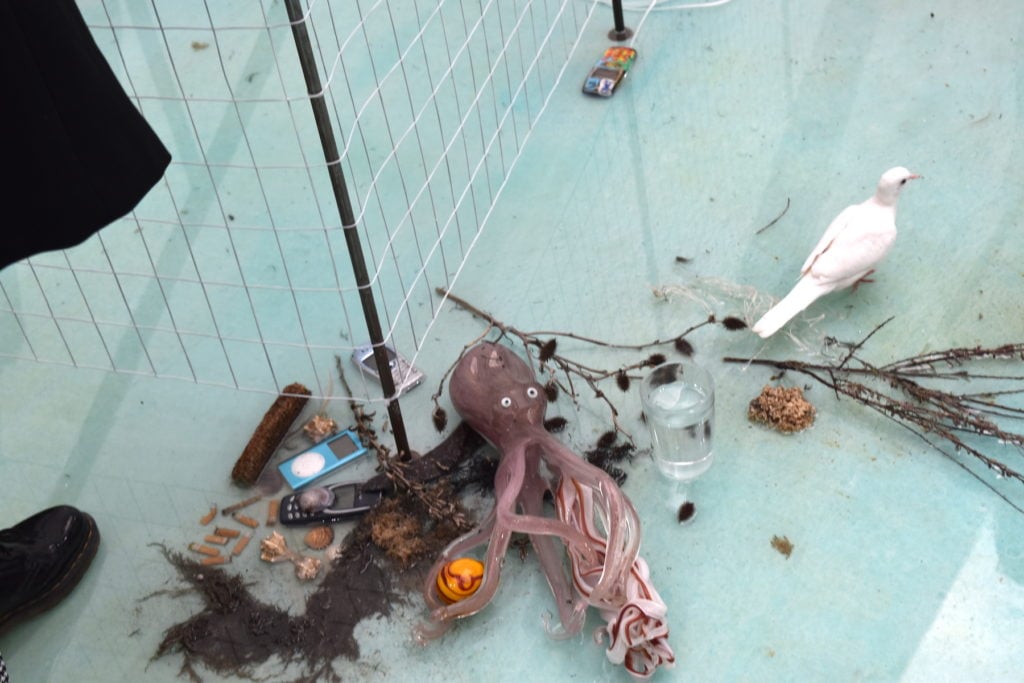
Laure Prouvout installation at the French Pavilion. Image courtesy Ben Davis.
Indeed, through her digging and meandering pavilion, Prouvost seems to tap into something deeper about the contemporary human condition, as one of liquid subjectivities that transcend such anchors as national politics. The curatorial text for the exhibition gestures towards the Polish-British sociologist Zygmunt Bauman, who characterized today’s world of rapid change, where subjects are formed out of a melting pot of many competing and contrasting identities, lifestyles and cultures, as “liquid modernity.” Individuals living in this world mired with uncertainty tend to be more fluid with their identities, easily shifting their relationships and political leanings or occupying a more nebulous and unsettling interstitial space that cannot be easily categorized.
As I left the French pavilion, Prouvost invited me to come and dig with her. Ready to take her at her word this time, I eagerly accept the proposal. A few hours later, I realized that she was talking metaphorically, inviting me, and the viewers of the French pavilion, to do some digging into ourselves.